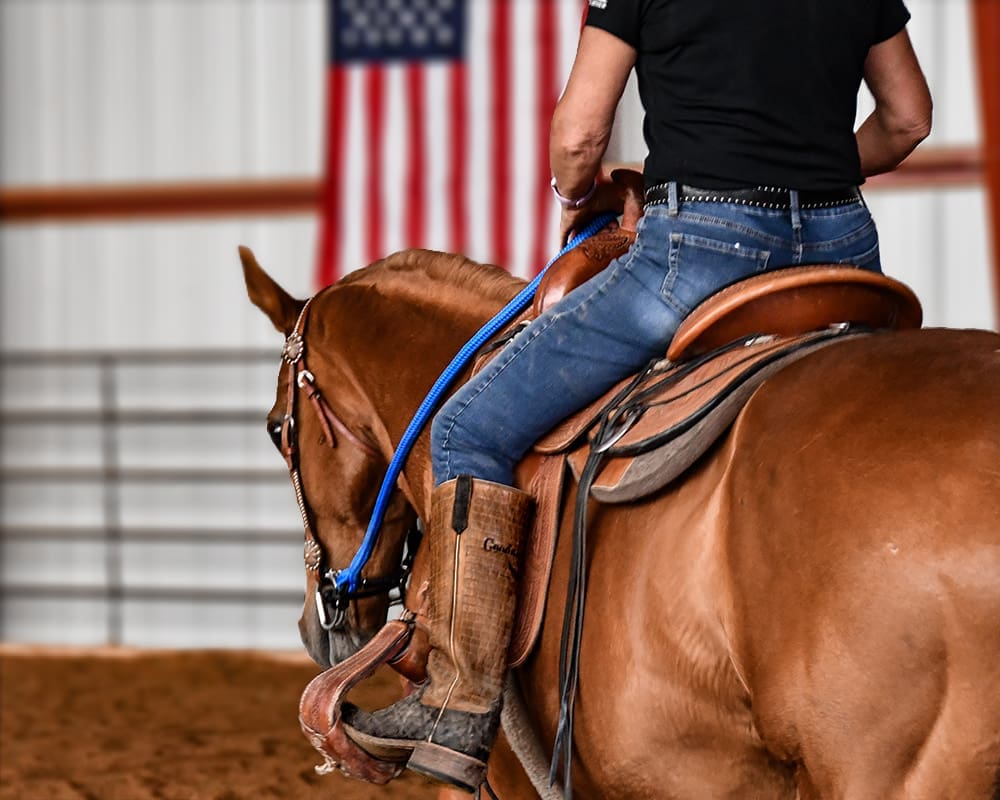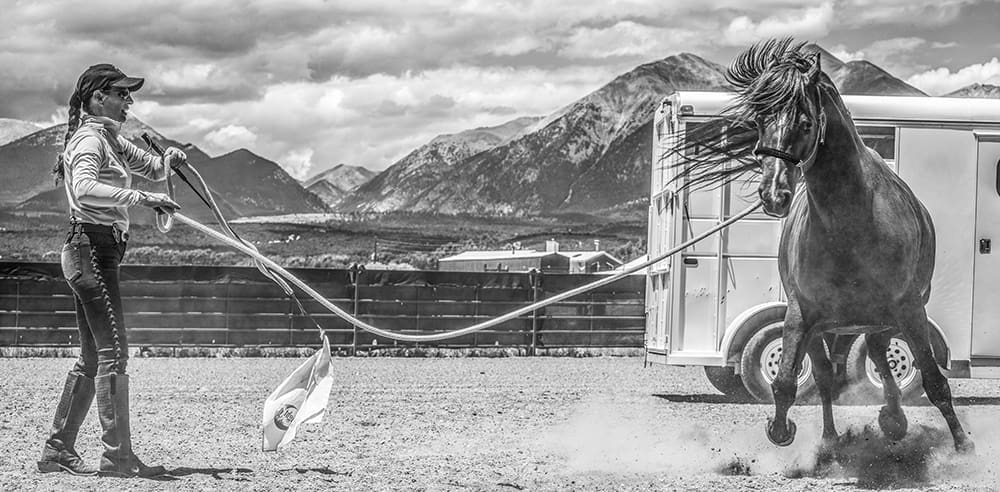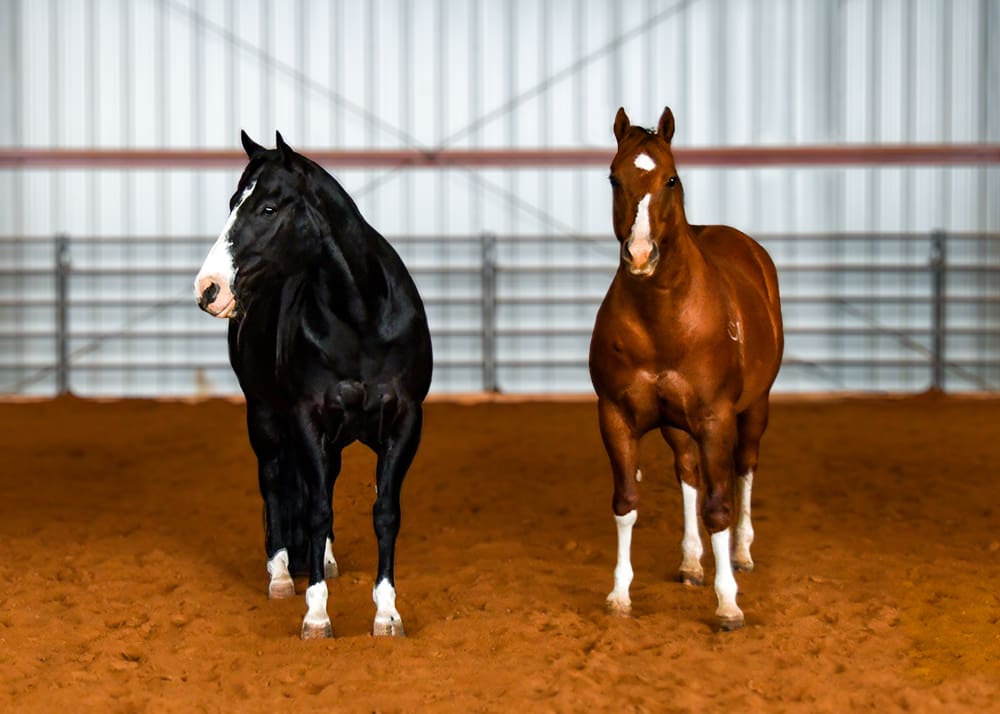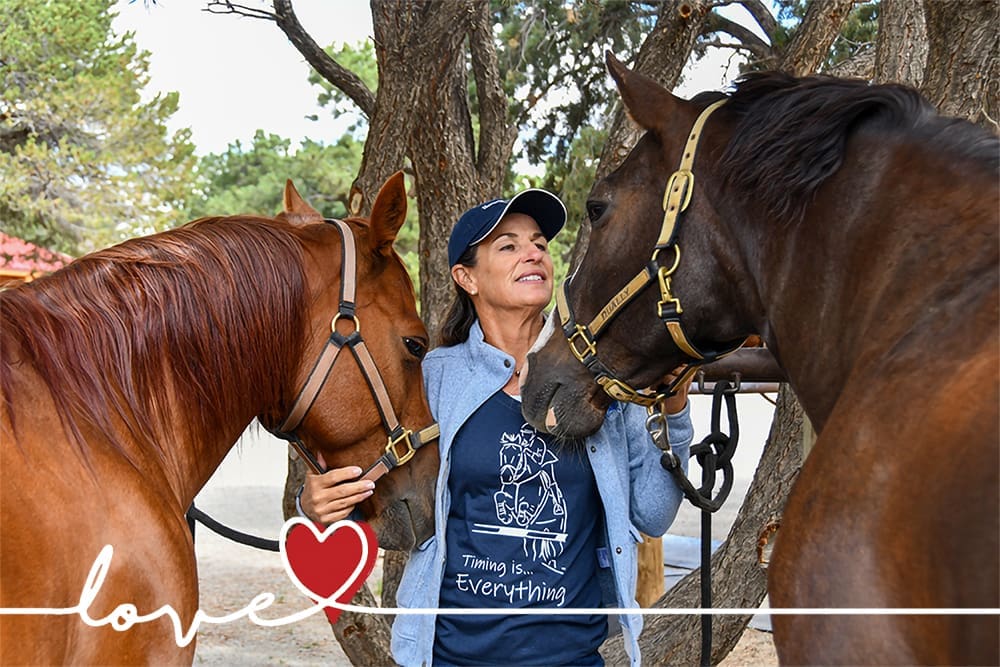Happy Day!
Finally it’s summer here (I hope) and I am actually wearing shorts and getting some color on my pathetically white legs (occupational hazard). Last week, during the shoot, we had two nights of frost, unusual for June and I lost some basil plants.
As I mentioned in the last post, we filmed five really good episodes last week. They will air on Horse Master July 30th, August 6th, 13th, 20th and 27th.
The first episode we shot was about a mare that kicked and bit other horses when she is ridden in company. Actually, I didn’t think her problem was too severe and once I showed the owner how and when to correct her, the mare was pretty good. She just had never really been taught that that was unacceptable behavior. This episode is about a very fundamental rule that all horses must learn—whenever humans are present, NO herd behaviors are allowed to be displayed and no interaction can take place between horses. They are perfectly capable of learning this rule but it has to be enforced with the harshest correction because this is a fundamental safety issue for both the humans and horses.
The second episode was about a spoiled pony. I was really impressed that Zeke, the 12 y/o owner, was able to change his way of handling the horse right away and the horse totally responded. The only thing lacking in that equation was leadership on Zeke’s part and once he stepped up to the plate, the mare was suddenly a perfect pony. BIG change in that horse! Mainly because of the big change in Zeke.
Our third episode was an 18 y/o Morgan/QH mare that had been used all her life as a cow pony and trail guide horse. She was a really sweet mare with an aggravating habit of walking off while you mount. Again, this is an example of a horse that was not trained properly—she clearly thought this was the right thing to do. I showed her new owner, Shantell, a simple exercise that would teach the horse to stand. Surprisingly, the mare totally got it the very first time I did the exercise! There’s a Q&A on my website about this exercise.
Fourth, we had Dave Currin, president of the National Versatility Ranch Horse Assn. www.nvrha.org. This episode will be all about the complicated and challenging competition, demonstrating each class and explaining the rules. With Dave, we worked on refining his cue for the flying lead change, which is required in the reining portion of the Working Ranch Horse class (reining, working cow and roping). Mainly what Dave’s horse needed was a pre-signal for the lead change—she needs to know what is coming. Just by preparing a little sooner for the lead change, his mare was able to pick up her lead change much smoother, with less cross-canter.
Finally, we had Linda and her Arab gelding, Stinger. In the 4 years that Linda has had Stinger, he has been riding “inverted”, with his head up in the air and his back hollowed out, rushing at the trot and canter. Linda’s main goal was to get him to slow down, put his head down and relax so that she could ride him on endurance rides. What I noticed right off the bat was that Stinger had a very poor saddle fit, with the front of the endurance saddle perched high on his shoulders and the back digging in hard into his loins. This “uphill” position of the saddle also positioned Linda poorly, with her leg way in front and her weight pressing on the cantle. This was most obvious when she tried to canter him—the canter requires him to round his back—so every time she cantered him he would crow hop and try to run off. It was a quick and easy fix for this little horse. All we did was change the saddle—putting my Circle Y Flex2 reining saddle on him—and he was a whole new horse. It was interesting and satisfying to see the big change in the horse and Linda was thrilled.
Now it’s back to regular life for me. I am trying to get more time in the saddle on my horse in preparation for some ranch horse events. Hopefully, things will be slowing down a little bit for me!
Until next time,
Julie
http://www.juliegoodnight.com
http://www.horsemaster.tv



